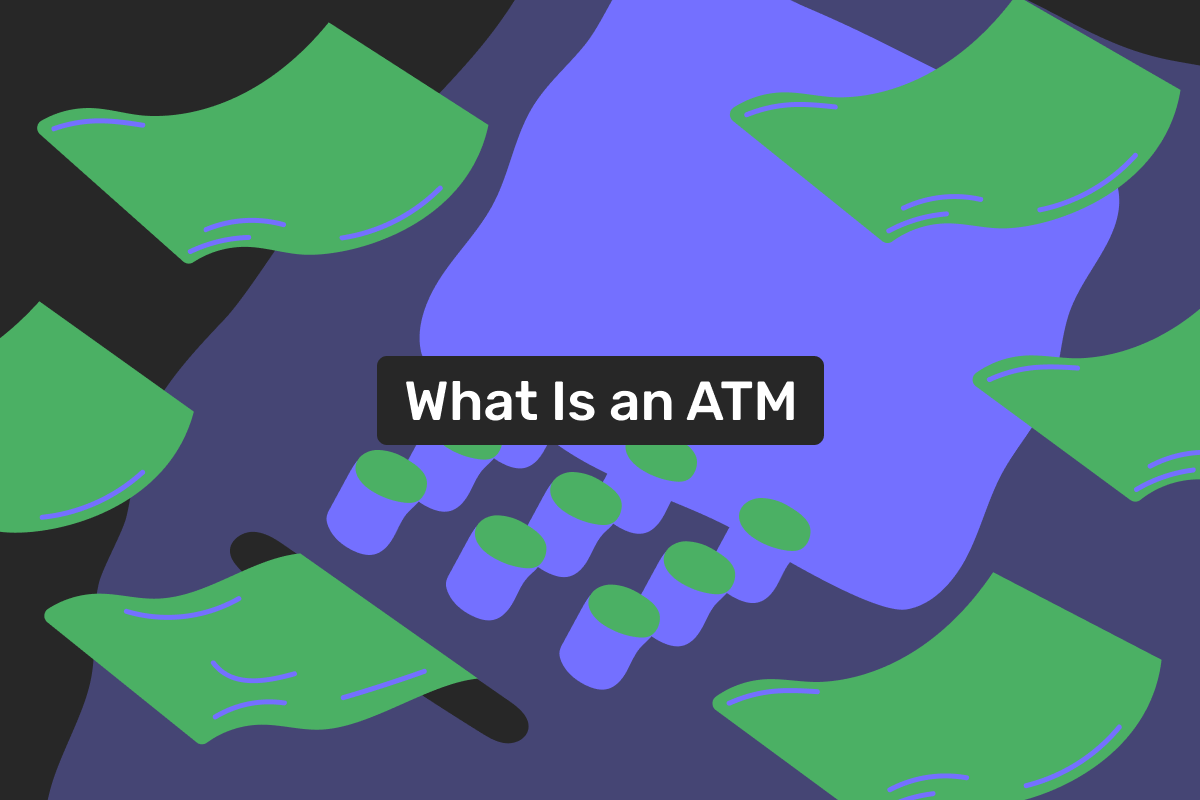Genome Blog / articles / What is an ATM: its purpose and services
Jul. 14, 2023
ATMs are so common these days that most people likely take them for granted. However, if, by some unexplained mystery, all ATMs disappear from the planet tomorrow – you will definitely notice. Because, at the end of the day, they are an integral part of essential banking tools and people’s day-to-day errands.
Have you ever wondered how exactly ATMs work and which services they provide? Well, Genome is here to answer your questions! Learn more about them in this article.
ATM: meaning of the term
The automated teller machine is a banking technology in the form of a specialized computer that allows bank clients to access some of the financial services without the need to contact bank representatives.
Different financial institutions install ATMs, so you will likely see them under various bank brand names. Automated teller machines are usually placed outside banks, shops, and other public places where people can easily use them. ATMs are most commonly used for money withdrawals.
What services do ATMs provide?
Let’s list some of the common services you can find within an automatic teller machine. But before we do so, please note that not all ATMs share the same features. Some of them serve as one-stop shops of sorts, while others are limited in what they can do.
The services usually include:
- Money withdrawal. No doubt, it is the most renowned feature of an automated teller machine. And it is fairly simple: insert your card into the ATM (or tap it if it uses NFC technology), enter your PIN, and withdraw physical cash from the card.
- Balance checks. This one is also pretty self-explanatory. You can check your card balance by inserting it into the ATM.
- Money deposits. It is the opposite operation of money withdrawals. To make a money deposit, you need to insert your card into the ATM, select the account you want to allocate money to, and then place cash into the cash dispenser. Note that not all banks provide such services, so you’d better check if your financial institution has automated teller machines that are capable of it.
- Transfers between accounts. Some ATMs allow you to transfer funds between your accounts if you have more than one or if these are accounts for different purposes (current, savings accounts, etc.).
- Payments and ticket booking. Some banks offer their clients the option of paying their bills (such as utility, electricity, phone bills, and other transactions) via ATMs. Moreover, you can even buy a train ticket – if the automated teller machine has the respective feature.
- Mobile top-ups. It is another convenient service that allows you to top-up your mobile phone using an ATM and a card.
- PIN change. Lastly, you can use it to change your card PIN.
How do automated teller machines work?
In essence, you can think of an ATM as a big computer created specifically to deal with your financial requests. Let’s review what it consists of, starting from the parts that are visible to you:
- The screen, which displays the primary services provided;
- The keypad contains buttons for clients to enter their PIN, select operations, and more;
- The card reader, which is a place you insert your card in. It allows reading the information from the card, usually thanks to the EMV chips on the card that stores information;
- The printer, which prints checks;
- The cash dispenser, which allows a person to receive money from the ATM. The cash dispenser is used to move money from the cassette – a place inside the ATM that holds cash;
Now to the internal parts:
- The mainboard is the heart of any automated teller machine, as it connects all other parts of it. The CPU and memory are stored inside of it, and it is responsible for the processing;
- The cassette, which we previously mentioned, is connected to the cash dispenser and stores money inside the ATM;
- The modem, which provides the internet connection;
- The I/O board, which is required to control the communication between the internet and the processor.
Now that you know about the main components of the ATM, let’s review how it works. Let’s use an example: Ben is planning to go to a local store that only accepts cash payments. Naturally, he needs to withdraw some money. Here’s what happens next:
- Ben goes to the ATM, which his bank installed, so he wouldn’t have to pay fees for using another bank’s automated teller machine.
- He inserts the debit card into the card reader. The display screen then instructs Ben to enter the personal identification number (PIN). He ensures that no one is watching him and enters the PIN using the keypad.
- Once Ben gains access to the ATM features, he selects the option to withdraw cash. He then enters the sum he wants to withdraw and sends the request, as well as fills out the PIN once again.
- The request is sent to Ben’s bank, which then approves or denies the withdrawal based on whether Ben has enough money inside his account;
- The bank approves the transaction, and money is dispensed to Ben via the cash dispenser.
Do you need a card to make payments and use it for ATM transactions? Genome has options! You can join Genome and order virtual and physical Visa debit cards for your personal needs as well as for your business! Learn more about our cards here.
FAQ
What is the full name of the ATM?
The ATM stands for automated teller machine. Also note that some countries use other names for ATMs, such as automated banking machines, cash dispensers, cashpoint machines, automated dispensers, and even holes in the wall among British people.
What are the main functions of ATMs?
The main services that ATMs provide are money withdrawals and deposits, balance checks, PIN changes, mobile phone top-ups, transfers between your accounts, payments, and ticket booking. We elaborated more about these functions above.
How does an ATM work step by step?
Here’s how it happens: a person finds an ATM that they need. They insert their debit or credit card into the card reader and enter their PIN. Then, they select a service they need, and their request is sent to the cardholder’s bank. The bank approves or declines the transaction.
How do you use an ATM?
It is fairly simple. First, you need to find an ATM – preferably the one installed by the same financial institution you have an account with. It will allow you to avoid fees. To start working with an automated teller machine, you need to insert your debit/credit card into it and enter your PIN. Then select the operation you want to perform. Make sure that no one’s watching you while you do so.
How do you transfer money from an ATM?
Unfortunately, not all ATMs have such a feature. You need to check your financial institution’s website first to ensure they allow ATM money transfers. To use this service, find your bank’s automated teller machine, insert the card, and enter your PIN. Then select the transfer feature and choose the account you want to send money to.
Can ATMs work without the internet?
No, as the ATM needs access to the financial institutions to execute operations, it usually uses the internet, the bank’s private network, or phone lines.
Is there a fee when you use an ATM?
It depends. If you use an ATM of the same bank that issued your card – there are usually no fees, and you can enjoy free ATM services. However, if you use another bank’s ATM, it may charge you for some operations. Most automated teller machines will warn you about fees that will be applied before you execute the said operations.





